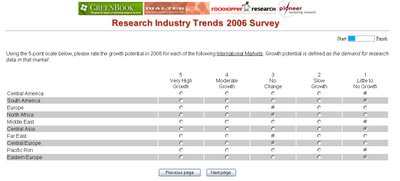For the past few months, the news media has been tearing up
ExxonMobil, at first for the enormous profits the company has been reaping of late. Then, the crowning touch came with the
news story that showed Exxon's retiring CEO
Lee R. Raymond as having been compensated to the tune of $144,573 for every DAY that he led the company (from 1993 through 2005). Even more scandalous was the fact that in 2005 alone, because of a lump-sum pension handout and rising stock price, the amount was much more -- over $1.1 million PER DAY.
During a period when
every oil company is making money hand over fist, does any one individual really deserve to be compensated over a million dollars a day?

Do we think that Exxon would have gone bankrupt these past few years, were it not for the management expertise of Mr. Raymond? To me, I'm not sure anyone really needs more than $25,000 a day to live a decent life as a corporate CEO operating a company that essentially extracts liquid from the ground, refines it, and sells it on the commodity and retail markets. Go ahead, brand me a Communist, or worse, a Liberal.
That got me to thinking. If Exxon's CEO could have scraped by on $25,000 a day, that would have freed up nearly $120,000 a day for the company. They could have run one hell of a consumer promotion with that budget. They could have called it the "
Exxon Challenge". Here's how it might have worked:
First, Exxon would conduct an internal database query of their ExxonMobil
SpeedPass Card holders. To minimize anomalies of small samples, they would filter out any ZIP codes with fewer than 5,000 total households (according to the U.S. Census). Exxon would then calculate the current market penetration (household incidence) of their
SpeedPass product, within every major ZIP code.
Then the "Exxon Challenge" would begin. For the first 3 months of the year, the company would promote a "membership drive", encouraging households in the largest ZIP codes to apply for and obtain an ExxonMobil
SpeedPass Card. At the end of 3 months, the ten ZIP codes that most substantially increased their market share of Cards would be named "Finalist" ZIP codes. (The
Fox Broadcasting Company or the
Game Show Network could get involved at this point, with a "reality" series.)
For the next 6 months, those ten ZIP codes'
SpeedPass Card holders would be encouraged to buy gasoline exclusively at Exxon and Mobil stations, using their new Cards. They would be encouraged to buy, buy, buy! Use as much gas as possible!
Then, Exxon would analyze the customer traffic volume across the ten Finalist ZIP codes to determine the one winning ZIP code that bought the most gas during the 6-month buying frenzy. The grand prize? Every
SpeedPass Card holder residing in that winning ZIP code would get $5,000 deposited into their
SpeedPass account! All paid for by Mr. Raymond's pay cut.
This promotion would elevate to a new plateau all of the things we Americans love about oil and gas companies -- greed, excessive depletion of limited resources, consumer debt, pollution, and (potentially) fraud. What's not to like about the "Exxon Challenge"?
Tags:
CEO,
compensation,
Exxon,
ExxonMobil,
Exxon Challenge,
Lee Raymond,
promotion,
SpeedPass
 As if that weren't enough to lift my spirits, my blog received the very flattering distinction of being recognized as a "Top 10" marketing research blog by the editors at "Top Ten Sources". You can check it out yourself, or just look in my righthand sidebar for the list.
As if that weren't enough to lift my spirits, my blog received the very flattering distinction of being recognized as a "Top 10" marketing research blog by the editors at "Top Ten Sources". You can check it out yourself, or just look in my righthand sidebar for the list.









